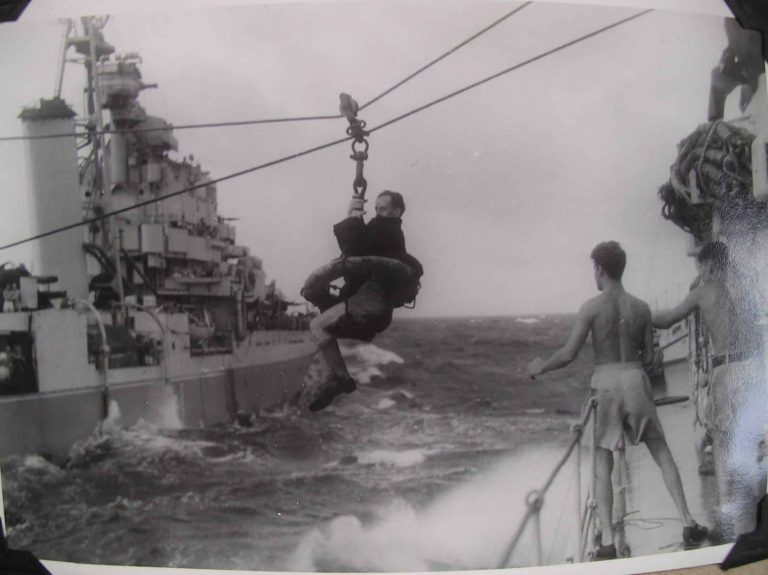The light jackstay is used for transferring personnel, provisions, and light stores with a maximum load of about 250kg. The hauling end of the jackstay is manned by up to 25 hands. The other end is secured by a grommet strop to slip in the receiving ship. A traveller block is hauled back and forth along the jackstay wire by an in–haul rope in the receiving ship and an out–haul rope in the delivering ship manned by up to six crew in each ship. Working distance limits are up to 24–61 meters with a normal working distance of about 34 meters.
This is a hazardous operation as the close approach of the two ships risks a collision caused by the rush of water between them. This can inadvertently cause the sterns of the ships to be pulled together and steering has to be constantly adjusted to counteract this effect. Replenishment at sea (or RAS for short) in NATO and Commonwealth navies is a method of transferring fuel, munitions, and stores from one ship to another while under way. Underway replenishment (UNREP) (US Navy) is the technique of underway replenishment perfected by the United States Navy in the 1920s and 1930s. These methods were used extensively as a logistics support technique in the Pacific theatre of World War II. Since it allowed extended range and striking capability to naval task forces the technique was classified so that enemy nations could not duplicate it. Presently, most underway replenishment for the United States Navy is handled by the Military Sealift Command. It is now used by most, if not all, blue–water navies.
MacFarlane, John M. (2013) Jackstay Transfer (Replenishment) at Sea. Nauticapedia.ca 2013. http://nauticapedia.ca/Articles/Jackstay_Transfer.php


